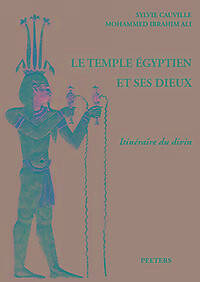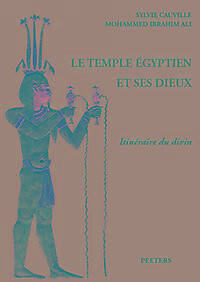
Je cadeautjes zeker op tijd in huis hebben voor de feestdagen? Kom langs in onze winkels en vind het perfecte geschenk!
- Afhalen na 1 uur in een winkel met voorraad
- Gratis thuislevering in België vanaf € 30
- Ruim aanbod met 7 miljoen producten
Je cadeautjes zeker op tijd in huis hebben voor de feestdagen? Kom langs in onze winkels en vind het perfecte geschenk!
- Afhalen na 1 uur in een winkel met voorraad
- Gratis thuislevering in België vanaf € 30
- Ruim aanbod met 7 miljoen producten
Zoeken
Omschrijving
English summary: Philae, Kom Ombo, Edfu, Esna, and Dendara are the most visited temples of the Greco-Roman period (between 300 BC and 300 AD). Their walls are covered with texts, unlike the prestigious sanctuaries of Karnak, Medinet Habu, or Abydos, and provide the interpretative keys of the latter. The sacred scribes of Ptolemy or Caesar transmitted this exegesis by utilizing millenary archives and by pushing to its extreme limits the almost infinite possibilities of hieroglyphic writing. The late Egyptian religious monuments would be nothing than heavy masses of stone if they did not maintain, through their decoration and texts, the memory of the pharaoh god who, on the basis of his legitimacy and thanks to his double nature - divine and human - perpetuated life in the old country. The populace was certainly invited, on a few rare occasions, to manifest their piety in both profound and naively trivial ways; the splendor of the intellectual conception, where the divine is eruditely exalted on walls bearing the most subtly suggestive writing, constitutes, however, the exclusive prerogative of the temple initiates. French description: Philae, Kom Ombo, Edfou, Esna et Dendara sont les temples de la periode greco-romaine (entre 300 av. J.-C. et 300 ap. J.-C.) les plus visites. Leurs parois sont couverts de textes, contrairement aux prestigieux sanctuaires de Karnak, de Medinet Habou ou d'Abydos, et fournissent les clefs interpretatives de ces derniers. Les hierogrammates de Ptolemee ou de Cesar ont transmis cette exegese en exploitant des archives millenaires et en poussant a ses limites extremes les possibilites quasi infinies de l'ecriture hieroglyphique. Les monuments religieux egyptiens tardifs ne seraient que d'assez lourdes masses de pierre s'ils n'entretenaient pas, par leur decor et leurs textes, le souvenir du pharaon-dieu qui, fort de sa legitimite et gryce a sa double nature - divine et humaine -, perpetue la vie dans le vieux pays. Le populaire etait certes convie, en quelques rares occasions, a manifester sa piete a la fois profonde et naivement triviale; la splendeur de la conception intellectuelle, ou le divin est exalte de maniere erudite sur des murs porteurs de l'ecriture la plus subtilement suggestive, constitue cependant l'apanage exclusif des inities dans le temple.
Specificaties
Betrokkenen
- Auteur(s):
- Uitgeverij:
Inhoud
- Aantal bladzijden:
- 412
- Taal:
- Frans
Eigenschappen
- Productcode (EAN):
- 9789042935334
- Verschijningsdatum:
- 31/12/2017
- Uitvoering:
- Paperback
- Formaat:
- Trade paperback (VS)
- Afmetingen:
- 170 mm x 239 mm
- Gewicht:
- 1020 g

Alleen bij Standaard Boekhandel
+ 104 punten op je klantenkaart van Standaard Boekhandel
Beoordelingen
We publiceren alleen reviews die voldoen aan de voorwaarden voor reviews. Bekijk onze voorwaarden voor reviews.









